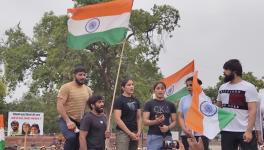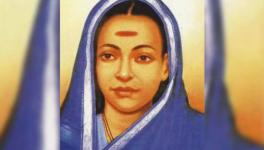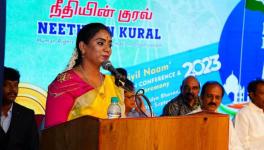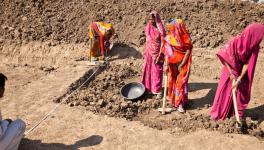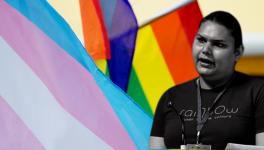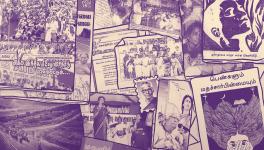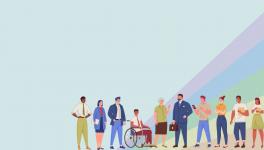Diversity and Inclusion in a Post 377 India
We were once deemed outlandish and the outcast… dubbed irregular and shunned into the shadows. But not anymore. Exactly a year ago, the Indian Supreme Court stood by India’s thriving rainbow community restoring our dignity as equal citizens. But while the judgment was historic indeed, we are still a long way from the inclusive utopia we all wish to inhabit.
It is important to reiterate at this point that we the Queer desis will not rest till we get equal rights. It is also important to commit that we will also stand with every Indian demanding justice and equality. This is because LGBTQIA people are everywhere… from schools and colleges, to streets and bazaars. From protests and demonstrations to bubbles of hopelessness and isolation that feed on our despair, cutting us off even more from the world. Queer rights are human rights and vice versa.
Intersecting identities and intertwined lives
Have you ever wondered, if among the many young Kashmiri students struggling to make contact with their families back home, was a young gay boy? There could be a Queer woman fighting for her forest rights in Sonbhadra in Uttar Pradesh. Was there a Queer person among the Dalit people attacked by stone pelting goons in Bhima Koregaon? Perhaps among the 19 lakh plus people left out of the National Register of Citizens (NRC) in Assam is a trans-man.
Then there are Queer people dying of custodial torture in jails, and Queer daily commuters falling out of our overcrowded trains. Queer Adivasis defending the Aarey forest, the Queer Bahujan person who grows up hearing jibes about reservations, the Queer journalist suddenly fired from her job after being dubbed “sickular” or “libtard”.
They are all a part of this complex and diverse country where our identities intersect as our lives intertwine. So when we deny people in these instances the freedom to be free and equal, we also deny Queer people the same freedoms. We are among you. We are you. We feel your pain, because we are the same.
Is corporate India walking the talk?
We are seeing a renewed vigour with which corporates are launching social media campaigns about inclusion. But how many actually hire people from a visible sexual minority? It is one thing to paint your logo with rainbow colours, quite another to understand what a transgender person goes through and how they did not grow up with the same privileges as cis gender people and therefore need a little more adjustment assistance and time.
How many human resource professionals are sensitive enough to not judge a fish by its ability to ride a bicycle? Do our sexual harassment related redressal mechanisms take into account the oppression and discrimination against LGBTQIA people? Most organisations merely pay lip service to inclusion just so they can check a box. Can we get any solid numbers about the actual number of people hired and if they actually stayed with the organisation?
Bullying is a harsh reality of our times and often leads to people quitting a hostile or toxic work environment at the very least and even suicide in extreme cases. How about categorically terming any such verbal or non-verbal abuse as hate crime and having a mechanism in place to prosecute such crimes so that the guilty are brought to justice?
Hate in the home
Education and legislation aside, the problem of non-acceptance by families is also very real. Abuse ranges from emotional, economic and physical to even sexual. ‘Corrective rape’ is a horrifying reality of the lives of many homosexual people. Who do you turn to when your own family turns against you?
The lesbian woman is perhaps the most invisible sexual minority, and when trapped in a heterosexual marriage is virtually sentenced to a life of sexual trauma, with no outlet for venting her anguish. Then there are the bisexuals, still misunderstood even within the wider Queer community, and often dismissed as either sexually confused or greedy.
Even today, many intersex babies are abandoned at birth. Most such people don’t have any documents. Imagine what would happen to them if NRC was implemented nationwide. Will they be forced to live and die in detention camps?
The way ahead
While it is important to cherish and celebrate our victories born out of long and hard fought battles, we need to sharpen our focus in the next leg of our quest for equal rights. We need education in every school and college about Queer issues, and these educative models should have a more intersectional approach. We need more legislation and policy decisions focused on Queer Rights such as mandatory sex and gender sensitivity education, marriage and adoption rights, anti-homophobia laws in offices and schools and legal recognition of our relationships.
The first hurdle was section 377, now that it is gone. In my belief, our approach henceforth shouldn’t be linear. We need to go in all directions and make strides in all fields. We need equality in its true spirit, not in mere words or social media posts. We need to include the Queer person in every issue affecting the country and vice versa. We have a long way to go. The nightmare that made us scream the loudest may be over, but I still have a dream. The odds may be seemingly insurmountable, but to quote Annie from Khamoshi, “Woh zindagi hi kya, jisme koi namumkin sapna na ho?“
Get the latest reports & analysis with people's perspective on Protests, movements & deep analytical videos, discussions of the current affairs in your Telegram app. Subscribe to NewsClick's Telegram channel & get Real-Time updates on stories, as they get published on our website.









